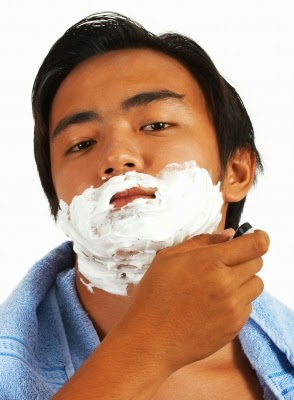 |
| Photo Credit: Flickr/Photographer: SMN |
Skin discoloration, no matter how faint, can be frustrating when trying
to achieve smooth, even skin. Keep in mind, some level of skin discoloration is
normal. When it comes to the face your T-Zones are lighter, and naturally so.
However, when you look into the mirror and see blotchy skin this could be
attributed to a wide variety of root causes.
Take for instance in Traditional Chinese Medicine, which says the body must balance the flow between five main elements to properly function. In case you were wondering, here's a list of those five elements:
- kidney associated with water
- liver linked to wood
- small intestines related to the fire
- large intestine correlated with metal
- stomach affiliated with earth
Things like skin discoloration can be indicators to greater
underlying issues or warnings signs for potentially greater issues. Of course
TCM is complex, so if you’re addressing any ailment using this school of
thought it's always best to consult a professional practitioner. If you’re in
the Northeast region of the country and have a valid passport, I highly
recommend checking out Cheung TradingCompany in Windsor, Canada.
Back to the quick ways you can help eliminate blotchy skin starting
today…
Water – internal hydration
is vital, considering your body consists of about 80% water. Studies show that about 75% Americans are dehydrated. This means, as your body’s running low
on water it first hydrates your blood, tissues and internal organs, getting little to no moisture to your skin. Your skin then becomes dry, maybe even ashy but
over time the lack of moisture both internally and externally, results in dark
spots and blotchy skin. Not to sound all campaign-like, but drinking water
really does do your body a lot of good. About eight glasses per day is
recommended, or half your body weight. However, (this is my personal opinion, warning not
backed up by… well, anything) I think it’s good to follow your instincts and
drink water until you feel hydrated. You already know that too much of anything
is not good for you, so you don’t go overboard but you may be more dehydrated
than you think, therefore require more water. In this case, if you’re tired of drinking water, then eat more
water-rich foods like watermelon, cucumber, honeydew, tomatoes and lettuce for starters.
Greens – while we’re on the
topic of food, eating more fresh green veggies also does a body a lot of good. I like to call these foods sun foods, as they are rich in chlorophyll (phyto-nutrient a.k.a plant
nutrients), simply put chlorophyll
helps your skin to radiate and shine. Not only are greens packed with
protein, but they also are loaded with iron, calcium, antioxidants and plenty more
vitamins and minerals (especially when eaten together). Consider greens like Swiss
chard, spinach, collards, callaloo your best friend, or at least when it comes
to nutrition. But remember your cruciferous veggies too: kale, cauliflower, broccoli,
Brussels sprouts, artichokes, arugula for starters.
Baking Soda – Before I offer
any tips here, let me caution you PLEASE DO NOT GO OVERBOARD WITH THIS
INGREDIENT. Again, too much of anything can become harmful, so start with small
amounts. With that said, just as baking soda is a natural whitener for your
teeth it also can help even out skin tones. Again, start with small amounts
place about a quarter size amount in the palm of your hand, add a little water
until it forms a paste-like texture, and then gently rub into your skin. Wash away
with water. Some people use baking soda daily in place of soap. However, I
suggest first seeing how it reacts on your skin and based on your preference
and your skin’s response, use more frequently. Baking soda is an alkaline
compound, and therefore helps to restore pH balance in skin. If you use too
much at once, some people have experience adverse effects where baking soda
literally eats the skin, which also is a natural chemical response if you go overboard. Don't let this scare you away, because this may not be your story and baking soda has many healing properties. Just remember to avoid using TOO MUCH at once.
Oh, one more bonus tip... STOP picking at your blemishes. Continued touching, rubbing, pricking and busting creates dark spots -- but of course you know that already ;)
If you enjoyed this post, check out my previous post explaining why it's best to use natural body products with whole recognizable ingredients... Healthy Skin Care Tips
- Avec Amour
Oh, one more bonus tip... STOP picking at your blemishes. Continued touching, rubbing, pricking and busting creates dark spots -- but of course you know that already ;)
If you enjoyed this post, check out my previous post explaining why it's best to use natural body products with whole recognizable ingredients... Healthy Skin Care Tips
- Avec Amour




